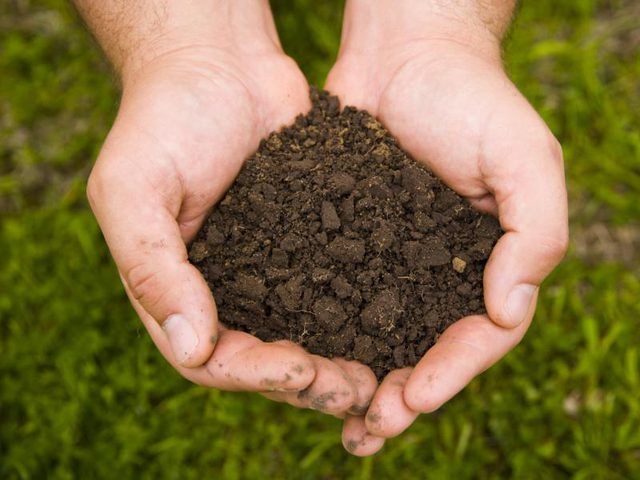Bulbs
Flower Basics
Flower Beds & Specialty Gardens
Flower Garden
Garden Furniture
Garden Gnomes
Garden Seeds
Garden Sheds
Garden Statues
Garden Tools & Supplies
Gardening Basics
Green & Organic
Groundcovers & Vines
Growing Annuals
Growing Basil
Growing Beans
Growing Berries
Growing Blueberries
Growing Cactus
Growing Corn
Growing Cotton
Growing Edibles
Growing Flowers
Growing Garlic
Growing Grapes
Growing Grass
Growing Herbs
Growing Jasmine
Growing Mint
Growing Mushrooms
Orchids
Growing Peanuts
Growing Perennials
Growing Plants
Growing Rosemary
Growing Roses
Growing Strawberries
Growing Sunflowers
Growing Thyme
Growing Tomatoes
Growing Tulips
Growing Vegetables
Herb Basics
Herb Garden
Indoor Growing
Landscaping Basics
Landscaping Patios
Landscaping Plants
Landscaping Shrubs
Landscaping Trees
Landscaping Walks & Pathways
Lawn Basics
Lawn Maintenance
Lawn Mowers
Lawn Ornaments
Lawn Planting
Lawn Tools
Outdoor Growing
Overall Landscape Planning
Pests, Weeds & Problems
Plant Basics
Rock Garden
Rose Garden
Shrubs
Soil
Specialty Gardens
Trees
Vegetable Garden
Yard Maintenance
How to Grow Corn in a Container
How to Grow Corn in a Container. Corn (Zea mays) often proves challenging to grow in containers. Not only is it a large plant requiring plenty of space, it is also particular about its growing conditions and care. Container cultivation may not produce a bumper crop of corn, but it will produce enough to give gardeners with limited space a taste of...

Corn (Zea mays) often proves challenging to grow in containers. Not only is it a large plant requiring plenty of space, it is also particular about its growing conditions and care. Container cultivation may not produce a bumper crop of corn, but it will produce enough to give gardeners with limited space a taste of summer. It is vital, however, to choose the right type of corn and the correct container to ensure a successful harvest.
Corn Types
Standard-sized corn cultivars grow too large for container cultivation, so smaller varieties work best. Early, short-stalked varieties such as Early Sunglow (Zea mays "Early Sunglow") and Precocious (Zea mays "Precocious") work well because they bear early in the season and stay relatively small. Miniature varieties like Golden Midget (Zea mays "Golden Midget"), Candystick (Zea mays "Candystick") and On Deck (Zea mays "On Deck") also thrive under container cultivation, although their ears are smaller than early-bearing varieties, which is another factor to consider. Be sure the miniature variety you select produces more stalks than just one.
Growing Conditions
Corn needs rich, deep soil and eight to 10 hours of sunlight each day to perform well. A large, draining container that holds at least 10 gallons of loamy, fast-draining soil for every four plants will work for corn, but it must be at least 21 inches wide and 8 to 12 inches deep. Mix in 1/2 tablespoon of granular 10-10-10 analysis fertilizer for every gallon of soil in the pot. For example, a 10-gallon pot requires 5 tablespoons of fertilizer. Start at least a dozen corn plants to ensure a good yield, sowing the seeds roughly 4 inches apart at a depth of 1 inch once soil temperatures warm to at least 65 degrees Fahrenheit. Once the seedlings reach a height of approximately 6 inches, thin the plants to a spacing of 8 inches. To ensure good pollination of the corn plants, plant several containers of miniature corn and group them close together.
Watering Requirements
Regular watering is vital to successfully growing corn, especially in a container. Sun and wind exposure combined with limited soil capacity mean corn will lose water faster than if it is grown in the ground. Check soil moisture daily and water whenever it feels barely damp 1 inch below the surface. Run a hose on low volume until water flows from the bottom of the container. Check the moisture level twice on especially hot days and water, if needed. Avoid shallow watering because it encourages shallow roots, which will decrease the corn's ability to withstand harsh conditions and encourage toppling.
Fertilizer Needs
Corn feeds heavily throughout its life cycle whether grown in the ground or in a container. Container-grown corn is especially susceptible to nutrient deficiencies because of its limited soil reserves and the loss of soil nutrients from constant watering. Feed the plants with a water-soluble fertilizer with an N-P-K analysis of 15-15-15. Mix 1 teaspoon of fertilizer with 1 gallon of water and replace one watering per week with the solution. If signs of nutrient deficiencies such as purple or pale leaves develop, increase feeding to twice weekly.